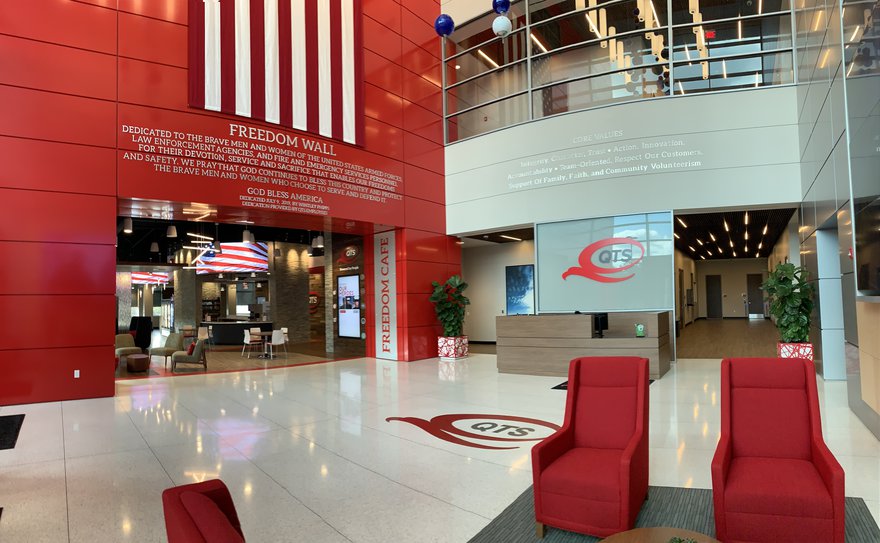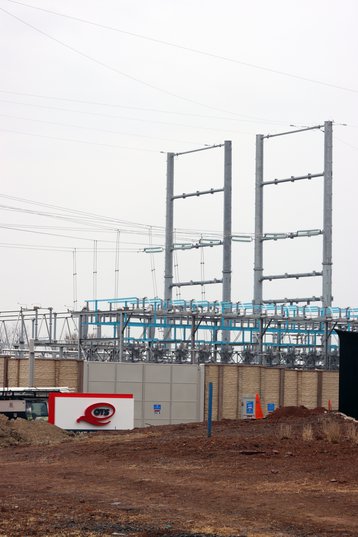As the needs of hyperscalers grow, data center developers are faced with the twin pressures of building faster and ever larger.
To understand how to stay ahead, we spoke to QTS Data Centers' chief growth officer Tag Greason about running a data center business in the gigawatt era.
"About three or four years ago, people would buy six megawatts, and then they would put six megawatts on reserve," Greason recalled. "Then it moved from six megawatts to half a building. And then it moved from half a building to a full building with another in reserve.
“Now we're starting to see hyperscalers out in the market asking for multiple buildings in single locations. And so that unit of growth has put pressure on the industry to keep up and maybe even be a couple steps ahead."
Previously the chief hyperscale officer at QTS, Greason understands the precarious space the company and its competitors exist in: "One of the things that’s important in this journey is that if the hyperscalers could build it themselves, they would."
To ensure that hyperscalers do turn to companies like QTS, they need to bring something else to the table. "The advantage we bring is speed - If I can take a year off of their timelines I'm in the conversation.”
To pull this off, the company looks for areas that are likely to draw hyperscalers and invests early, buying the land and building out as much as possible before they find a customer.
"You’re seeing this acceleration in not only unit of growth, the acceleration in our pre-planning and our leap forward in land and entitlements and getting the pad ready,” he said.
Of course, that means buying up land and starting preparatory work even without a guarantee of business. "It's a leap of faith, but less than five percent of the total cost of the project is going to be landed in. I could even build a shell standing there and still be sub-20 percent of the total cost.”
The real cost comes after the deal is signed, and the shell has to be configured to the unique needs of the customer. “That’s where I start spending really large dollars,” Greason said. “The first leap of faith is buying the land in the right location, and then the cost is minimal to get yourself prepared in the game."
Where to place that bet on that land has changed as the concept of a cloud 'availability zone' has changed. "For years, the hyperscalers said, 'hey, I need you to be within proximity of my availability zone - you need to be in Amsterdam, you need to be in Ashburn, you need to be in Santa Clara,’” he explained. “They dictated where the industry put dots on the map, because it needed to fit within their box.”
Now, as demand outstrips land and power supply in the original zones, “they want to know, ‘can you create a new roadmap to 150MW at the timelines that we need?’ They don't really care if I have 10 acres in Amsterdam, 15 acres in Frankfurt, or 30 acres in London, all they ultimately care about is whether I can get them access to infrastructure. That has been the key to all of this as we go forward."
To find the right land, QTS first focuses on the industry's number one bottleneck: "I don't mean to be facetious, but I see people going out all the time and acquiring 300 acres with the hope that they're going to go to the utility company and secure the power contract,” Greason said. “That to me is the real leap of faith. We've gone at it with a different approach - I'm letting the utility company tell me where I should go.”
The company turns to utility companies and says “'show me on the map where we can get a roadmap to 400MW.’ And then I've de-risked the entire venture."
To do this with ever larger power envelopes in an increasingly grid-strained environment has meant getting more involved in understanding how utilities work. "18 months ago, we had two people in our utility group. We now have 26 people. We know where the bottlenecks are, and we're bringing people in from industry that speak the right language of a large-scale utility company.”
That’s critical as the company moves to a much larger scale. Across all of its deployments, QTS maintains around a gigawatt of infrastructure. “Now. we're looking at eight to 10 sites in the US that ultimately can get to a gig of power each.”
That giga campus strategy may take half a decade to come to fruition, but still represents a huge leap in ambition. “To think that we would go to eight times what we have now makes me nervous,” Greason admitted. “How do we get to do that? Can my team do that? Do I have the development resources? Are we going to stress out our finance team? How are we going to raise the capital for all of that? The organization has to be focused, or we’ll break something along the way.”
He’s confident the company can rise to meet the challenge, but was clear that this means operating at a scale and scope that is unlike any QTS have seen in the past. “All of the power in the state of Arizona today is seven gigs,” he said. “And we're going to them and saying, 'we'd like to build one gig.'”
QTS doesn’t see that demand tapering off. “If I think about the signals, I see no cap,” Greason said. But what could be a limiting factor is the ability is supply power to different locations around the world.
In Arizona, where the utility is wondering how to ramp up to meet QTS’ needs, “we’re gonna start with a 300MW substation, and then we're going to build a second 300MW substation,” he said. “And we're going to have to be thoughtful and patient, and try to establish the foundation and change the dialog with the utility companies.”
This change is what will set the pace of the industry. “The demand side is not going to be the problem here. It’s supply side and understanding those bottlenecks. And getting ahead of them is the ultimate secret to this whole equation of how to speed to scale.”



